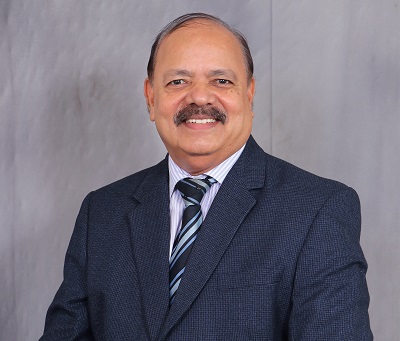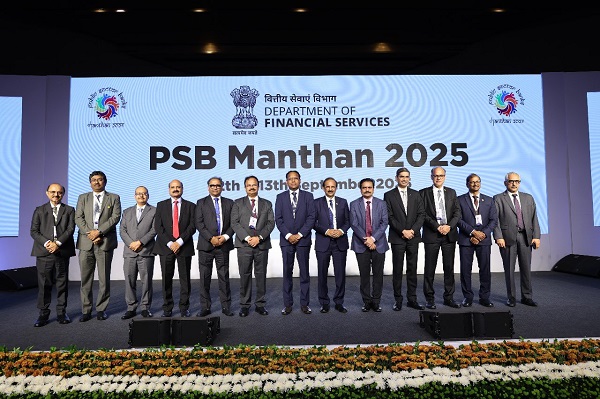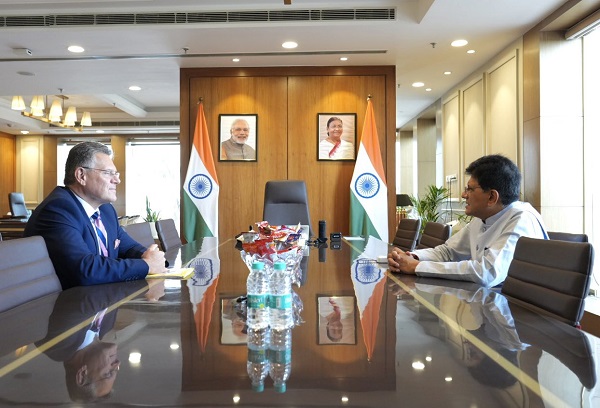.png)

By K. Srinivasa Rao
Kembai Srinivasa Rao is a former banker who teaches and usually writes on Macroeconomy, Monetary policy developments, Risk Management, Corporate Governance, and the BFSI sector.
September 17, 2025 at 6:46 AM IST
Bank reforms in India have had a long journey, beginning with the Narasimham Committee - I in 1991 and Narasimham Committee - II in 1998. These laid the foundation for a more market-oriented banking system. Strategic reforms were further reinforced through deliberations at Gyan Sangam – I in 2015 and Gyan Sangam – II in 2016. Gyan Sangam – I was particularly historic, attended by the Prime Minister himself, who led discussions with policymakers from the Ministry of Finance and top bank leadership. These apex meetings sought to chart a forward-looking path for public sector banks.
Later, such deliberations were continued under the banner of ‘Manthan’, with meetings held in November 2017 and April 2022. The most recent Manthan was convened on September 12–13, 2025, to evolve strategies that align the power of public sector banks with the growth aspirations of Viksit Bharat 2047. These gatherings represent not just symbolic exercises but opportunities to recalibrate the direction of reforms in line with the emerging needs of the economy.
Committees to Frameworks
A significant shift in the reform narrative came with the launch of Indradhanush in August 2015, a seven-pronged strategy aimed at improving governance, autonomy, capitalisation, management of non-performing assets, leadership appointments, and accountability. Under this framework, the Banks Board Bureau (BBB) was set up in 2016 on the recommendations of the Nayak Committee to identify candidates for top leadership roles in PSBs. In 2022, this was transformed into the Financial Services Institutions Bureau (FSIB), broadening its scope to cover insurers and financial institutions alongside banks.
Manthan in November 2017 further advanced the reform process, creating a roadmap for structural and operational changes. It introduced the Enhanced Access to Service Excellence (EASE) programme, initially focused on operational efficiency and customer service. Over time, this framework became a key instrument in nudging PSBs towards adopting technology-driven solutions and competing effectively with new-generation private sector banks.
Technology became the differentiator. As private banks attracted customers with digital interfaces, PSBs had to overhaul systems, modernise operations, and adopt customer-centric models. Competition drove them to improve internal processes and prepare for eventual consolidation.
Merger Outcomes
The most visible outcome of reforms was the merger of PSBs, reducing their number from 27 to 12 by April 2020, an implementation of Narasimham Committee-II’s recommendations. The logic was simple: stronger, larger banks would benefit from economies of scale, improved governance, and more efficient deployment of resources.
While consolidation addressed structural weaknesses, another crucial Narasimham recommendation remains unfulfilled. This was the creation of a three-tier system comprising a few large global banks, 8–10 national banks with wide networks, and regional or local banks serving specific needs. It also advised that weaker banks be rehabilitated, merged, or limited to “narrow banking” functions. The purpose was not only to strengthen domestic stability but to ensure that Indian banks establish a global presence.
India is today the world’s fourth-largest economy. Yet only two of its banks, SBI (ranked 43) and HDFC Bank(73), are in the top 100 globally by assets. This mismatch highlights the need for the next phase of reforms to be asset growth-centric while evaluating mergers for other efficiencies. Mergers rejigs the asset base but do not bring any significant increase in volumes.
Asset Growth
Data on asset size trends underline the problem. The Indian banking industry’s total assets rose from ₹131.3 trillion in 2016 to ₹180.1 trillion in 2020, a compound annual growth rate (CAGR) of 7.4%. By March 2024, assets stood at ₹280.8 trillion, reflecting a stronger CAGR of 11.2%.
Within this, PSBs grew from ₹91.7 trillion in 2016 to ₹107.9 trillion in 2020, a CAGR of just 3.3%, before accelerating to ₹154.9 trillion by March 2024, a CAGR of 9.4%. Private banks, by contrast, expanded from ₹31.5 trillion in 2016 to ₹51.3 trillion in 2020, a CAGR of 12.6%. By 2024, they had doubled their asset base to ₹105.2 trillion, at a CAGR of 21%. Even accounting for the higher base of PSBs, the divergence is striking. Private banks’ greater risk appetite, quicker adoption of technology, and sharper customer orientation have propelled them forward. The merger of HDFC with HDFC Bank further consolidated this trend, ensuring that at least one more Indian bank entered the global league.
The lesson is clear: PSBs cannot rely on mergers alone. They must actively expand their asset base, or they risk falling further behind their private peers and struggling to secure a greater presence in the future on the global banking stage.
Strategies for Expansion
There is ample room to grow. As of March 2025, India’s banking sector maintained a capital adequacy ratio of 17.2%, comfortably above regulatory norms. This provides the cushion needed to expand lending without compromising stability. What is required is a systematic strategy to boost deposits, strengthen credit risk frameworks, and diversify exposure.
PSBs need to reinvent deposit products to appeal to the younger generation, offering flexibility and digital convenience alongside attractive features. A strong base of low-cost deposits will provide the lendable resources necessary for asset growth. Credit risk assessment tools must be fine-tuned to control rising credit costs and to ensure that managers are confident in sanctioning loans. Without building that confidence, risk appetite will remain subdued.
Here, technology and AI can play a transformational role. By tapping into market intelligence and monitoring data in real time, banks can anticipate risks and intervene early. This can prevent the build-up of bad loans and encourage prudent expansion. A balanced mix of funded and non-fund-based exposures will also help maintain risk within appetite while growing contingent assets through guarantees and letters of credit.
Partnerships can accelerate growth. Working with institutions such as NaBFID and IFCI allows PSBs to finance large projects whose techno-economic viability has already been validated. This reduces the burden of due diligence on individual banks while scaling up exposure to transformative sectors of the economy.
Beyond Consolidation
It is tempting to view mergers as a panacea for building scale, but they are only a starting point to draw synergy and operational efficiency. To climb the global rankings, Indian banks must double down on asset growth. Most large PSBs, barring SBI, are stuck near the ₹20 trillion mark. Unless they expand to at least ₹40–45 trillion over the next five years, by 2030, they will struggle to break into the top 100 globally.
The ability exists. Banks such as Bank of Baroda, Punjab National Bank, and Canara Bank have shown the appetite to grow. With strong capital adequacy, adequate skills, and improving infrastructure, they are well placed to take on the risks associated with larger balance sheets. What is needed is a clear directive from policymakers that the next generation of reforms should be asset-focused.
Manthan 2025 offers the right opportunity to make this shift. The reform agenda should integrate technology adoption, risk management, and growth strategies into a comprehensive approach for scaling. Without it, India risks remaining an economic heavyweight supported by banks that are global lightweights.




